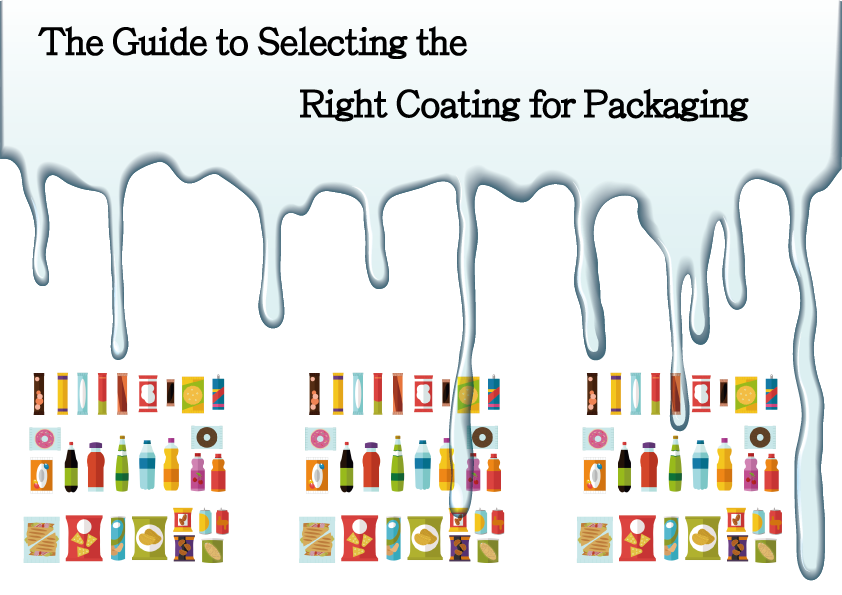The Guide to Selecting the Right Coating for Packaging

Different coating methodologies serve to meet different purposes in packaging. There are lots of options for standard and specialty finishes. This can be confusing and overwhelming for many. In this guide, you learn how to choose the right coating based on the compatibility with your overall packaging specification such as the substrate used, the design requirements, and the budget constraint.
Use coating to set the stage for print
The different substrate has different dyne level. Dyne level is the measurement for surface tension. The higher the dyne level, the easier it is for the printing ink to attach to the substrate. Some substrates naturally have higher dyne levels than others. For instance, PET on average has a 42-dyne level. As for LDPE and OPP an average of 31 dyne level. The substrate can be treated to increase its dyne level. However, it is not without limitations. Nowadays where water-based inks are increasingly being adopted on the market, a challenge arises for maintaining the ink on the substrate. A 100% water has an average of 72 dyne level, making it a much higher dyne level than most substrates. Therefore, the coating is applied to aid the attachment of the printing ink onto the substrate. This is especially true for many of the digital water-based printing today. The substate goes through the coating station prior to the printing operation.
Use Coating to enhance the packaging design
Coating applied to a certain area of the packaging design to increase the look and feel of the product. This type of coating is called spot coating or UV coating, as often this type of coating utilizes UV inks. Spot coating is widely adopted in luxury products for two reasons. To help the product stand out in front of the consumer. Secondly, the cost is justified by a higher margin.
Use Coating to protect the interior from exterior elements
The coating can be used to serve as a barrier to keep the interior product away from exterior elements. Elements including air, sunlight, water, grease, bacteria, and dirt. The main goals of the coating are to extend the shelf life, maintain freshness, and to keep the product clean. This type of application is widely adopted in the food industry to maintain the food at its best. When comparing lamination to coating, lamination usually has a better barrier property. For instance, the lamination of foil to PET has a better barrier functionality than PET with coating. However, the cost of lamination is usually higher compared to coating. Therefore, one has to weigh the balance between functional performance and cost.
Use Coating to protect the exterior from interior elements
This is the opposite from the above, where we covered using coating to protect the interior from exterior elements. Common application includes fast food wrappers. Think of McDonald's, the wrapper of your Double Cheeseburger has an inner coating layer to keep the grease and watery content from finding its way onto your hand. As this type of application doesn’t require maintaining the internal product for an extensive period of time. Selecting the coating with lower cost over the lamination with higher functionality will be suitable.
Use Coating to protect the print and package from an exterior force
The coating can be applied to prevent the wear and tear of the packaging. To increase the packaging strength. When comparing coating and lamination, usually lamination is able to provide better tear-resistance. Lamination is a better option to protect the packaging during logistic shipments. However, as mentioned above, lamination usually cost more than coating. Therefore, once again it is a balance between performance and cost.
The coating is applied to packaging for many reasons. Depending on your requirement one can choose coating over lamination or vise vera, one can choose to apply coating or not, one can choose to apply coating on a full scale or only on a few selected spots. I hope this guide will help you organize your thoughts when it comes to the coating application. To help you breakdown the reasons for selecting coating so you can make a better-informed decision.

Article by Daywey Chen, KYMC


























